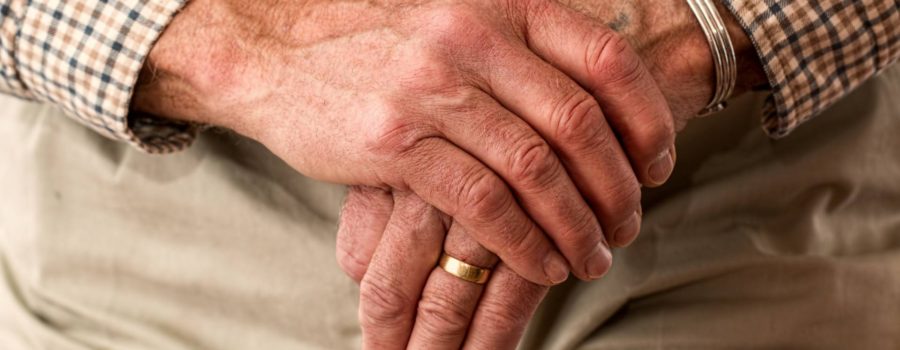There’s no denying that modern medicine is impressive and is becoming more so with each passing year. The amount of illness and affliction that can now be prevented, healed, or at least reasonably managed gives us a much better chance – all things equal – to live longer, more vital lives than ever before.
But the fact remains that despite all the scientific advancements and new age treatments now available to us, many of our most debilitating health issues are self-inflicted. In fact, in my practice of helping the elderly and their adult children navigate through difficult late-life challenges, I’m often struck by the propensity of my clients to get upended by simple, somewhat preventable things.
For the elderly, some of the most unfortunate and debilitating situations result from a fall. Broken limbs and contusions heal much more slowly in the elderly, putting them at increased risk for complications, and a head injury or broken hip puts them in a much more dire situation.
According to the US Centers for Disease Control and Prevention, 1 in 4 Americans aged 65+ falls each year, directly resulting in 9,500 premature deaths. But it’s the propensity for such accidents to substantially and irreversibly impact the quality of an elderly person’s life that causes even more of a concern, especially if a fall results in a head or hip injury. I’ve seen this repeatedly throughout my 30-year career, throughout my professional practice, and in my personal life as well, as it was a broken hip that initiated a series of events that tragically ended my mother-in-law’s life.
Want to keep your parents happy, healthy, and vital well into their 80s or 90s? There may be nothing more important than keeping them off the floor!
So, if you have a loved one who is getting on in age, you should absolutely give some thought to fall prevention. In the interest of simplicity, here are my Top 10 Tips for preventing falls in the elderly.
#1. Always Assess: This one is at the top of the list for a reason. In my experience, many fall victims that I’ve worked with were at high risk for a fall well before the event happened and could have been spared the anguish had a proper proactive assessment been performed and safeguards put in place. It is typical for our senses to diminish somewhat as we age, and most people steadily lose muscle mass, which can lead to locomotion and balance problems. These conditions can be exacerbated by some medications, and infections like a urinary tract infection (UTI) can rock an elderly person’s world. Watch your elderly friends and family very closely and take seriously any perceived reduction in physicality or agility. Simply acknowledging this situation and having the courage to discuss it can make all the difference.
#2. Deadly Dehydration: Some studies show that 20% to 30% of older adults are chronically dehydrated, but I believe that estimation to be on the conservative side. Older folks are at increased risk of dehydration because they naturally carry lower volumes of water in their bodies, and they tend to be less conscious of the need to consume water regularly. Certain medicines can make the problem worse, as can health problems like diarrhea. A dehydrated elderly person is much more likely to experience weakness and dizziness and is thus a major fall risk. If you want to keep your aging parents on their feet, make sure they drink water regularly.
#3. Don’t Get Tripped Up: This one seems so obvious, yet it is the cause of so many falls. Uneven floors, a crack in a concrete walkway, or simply a cluttered living space could put an elderly person at risk. Throw rugs are notorious tripping hazards and should be avoided at all costs. Inspect an elderly parent’s living space often and remediate any issues that could upend them.
#4. Light the Way: A pass through an elderly person’s home during the hours of darkness should easily reveal any areas that require better lighting. Strategically placed nightlights are a simple but effective way to subtly illuminate the path from bed to bathroom, a common problem area. Pay particular attention to exterior patios, walkways, and especially masonry steps, as these are the most likely places for serious accidents to occur.
#5. Mitigate Moisture: This is a more common problem in commercial situations like fast food restaurants and convenience stores, but a wet floor inside the home is like a death trap for anyone who may be a bit unsteady on their feet. Bathrooms and entryways are two areas where slip-and-fall accidents are most common, so be sure to address these spots. The solution here can be tricky, as the easiest remediation usually involves an absorbent rug or mat, but this can create a tripping hazard. Make sure that anything you put down to absorb moisture is well secured to the floor and does not curl up on the ends in any way that could present a problem.
#6. Sliding on Stairs: More falls occur on stairs than any other place in the home, and dealing with stairs is worthy of an article in-and-of itself. Obviously, the best approach for an elderly person is to avoid traversing stairs altogether, but this isn’t always an option. If stairs must remain in the picture, be sure that railings are secure and that steps are free of anything that could cause a problem. If budget permits, consider a chair lift. These can often be leased for a more cost-effective solution.
#7. Safety in Shoes: I have seen improper footwear cause devastating falls. An elderly person should treat new shoes with caution until they have worn them around the house for at least a few days. Shoes that are purchased a size too big – perhaps to accommodate a bunion, hammer toe, or other foot ailment – can be especially troublesome, especially when worn for the first time. Make sure all shoes fit properly and have soles that provide solid traction. To the elderly, walking around the house in socks is akin to ice skating, and it goes without saying walking in socks should be avoided, especially on slick flooring like hardwoods and laminate.
#8. Bathroom Basics: Young folks frequently underestimate the amount of dexterity it takes to navigate a bathroom. For the elderly, something as simple as getting up from toilet can be a real adventure and a source of quite a bit of angst. Showers can be even more troublesome. Bathroom accommodations are ideally installed well before an elderly person knows they need them. Consider installing a raised toilet seat and grab rails within easy reach of the toilet. A combination of both horizontal and vertical grab rails in the shower stall are an absolute necessity for the elderly (and truthfully not a bad idea for all of us). Ideally, bathtubs would be replaced by a low-threshold shower stall, or even a wheelchair accessible shower, if budget permits.
#9. Assistance Needed: If your parents are anything like most of my clients, using an assistive device like a cane or walker is something they rarely do voluntarily. In fact, it usually takes a fall or some other “close call” for them to realize they need help getting around. Once things regress to the point where it becomes cringeworthy just watching an elderly person attempt to walk a short distance, then it’s probably past the point of them being ready for some type of assistive device. While a cane is initially a bit more palatable for them, and thus more likely to be adopted, I have grown not to trust them. In my experience, a walker is much safer, and it’s worth the extra effort to attempt to convince your elderly loved one to use one. Convince them to use it around the home to start, then work outward from there.
#10. Teach Technique: If you’ve ever watched an elderly person go through occupational therapy, you’ll recognize that there is a preferred technique for most of the usual day-to-day activities we all take for granted. Getting out of bed, sitting down on a chair, standing up from a chair, and getting in/out of a wheelchair are best done slowly, carefully, consciously and with a specific sequence of events in mind. While this topic deserves an article unto itself, the most important thing to keep in mind here is that it can be very difficult for an elderly person to re-learn how to perform tasks that they’ve been doing easily and unconsciously throughout their lives. It takes patience, self-awareness, and a giant dose of humility for them to progress to a point where they are performing these tasks safely. To this end, I have found it useful to remind my clients on a regular basis to “stay off the floor”. Reinforce this concept often with them and make it a mantra. You’ll be glad you did!
At One Life Consulting, we can help you put together a plan for helping to keep your loved one safe at home, which might involve enlisting some outside help. Contact us to learn more.





